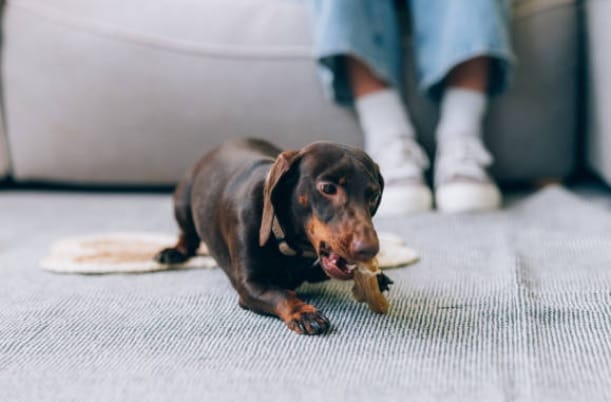What to Do If Your Pet Swallows a Foreign Object

What to Do If Your Pet Swallows a Foreign Object. If you’re anything like me, your pet is more than just an animal—they’re part of the family. But let’s be real: they also have an uncanny ability to get into things they shouldn’t. One minute, you’re enjoying a peaceful evening, and the next, you’re watching in horror as your dog swallows a sock or your cat swipes a shiny piece of ribbon into their mouth. Panic sets in. What now? Take a deep breath—I’ve got you covered. Here’s exactly what to do if your pet swallows something they shouldn’t.
Why Do Pets Swallow Foreign Objects?
Before we dive into the action plan, let’s talk about why pets do this in the first place. Dogs are natural chewers and often use their mouths to explore the world. Puppies, in particular, are notorious for gulping down toys, socks, and even rocks. Cats, on the other hand, are drawn to string-like objects—think yarn, tinsel, or hair ties. Their hunting instincts can make them bat at and ingest things that resemble prey.
Some pets also have a condition called pica, where they compulsively eat non-food items. If this is a recurring problem, you may want to talk to your vet about underlying medical or behavioral issues.

What to Do If Your Pet Swallows a Foreign Object
Step 1: Assess the Situation
First, take a moment to evaluate what’s happening. Did your pet just swallow something whole? Are they coughing or struggling to breathe? Here’s what to look for:
If Your Pet Is Choking:
- Pawing at their mouth
- Gagging or retching
- Struggling to breathe
- Blue or pale gums
If Your Pet Swallowed Something But Isn’t Choking:
- Acting normal, no immediate distress
- Mild coughing or gulping
- No signs of pain (yet)
If your pet is choking, skip ahead to Step 2. If they’re not in immediate distress, move to Step 3.
Step 2: Helping a Choking Pet
If your pet is actively choking, you need to act fast.
- Check their mouth. If you can see the object and safely remove it with your fingers or tweezers, do so. Be careful not to push it further down.
- Perform the Heimlich maneuver for pets:
- For small dogs and cats: Hold them upside down, with their back against your chest. Give five firm thrusts just below their ribcage.
- For larger dogs: Stand behind them, wrap your arms around their belly, and give quick, firm abdominal thrusts (like you would in a human Heimlich maneuver).
- If they lose consciousness, begin CPR and get to the vet ASAP.
Step 3: What to Do If Your Pet Swallowed Something (But Isn’t Choking)
If your pet swallowed something and they’re breathing normally, don’t panic—but don’t ignore it either.
What You Can Do at Home:
- Try to identify what they swallowed. Was it something small and smooth, like a button? Or something sharp and dangerous, like a needle?
- Monitor them closely. Look out for vomiting, drooling, lethargy, or signs of pain. If they start acting sick, call the vet.
- Check their stool. (Yes, it’s gross, but necessary!) If the object passes in 24-48 hours and your pet is acting normal, you’re in the clear.

What to Do If Your Pet Swallows a Foreign Object
Step 4: When to Call the Vet
Certain situations require immediate veterinary care. Call your vet if:
- The object is sharp, toxic, or too large to pass (like a corn cob or bone).
- Your pet is vomiting, refusing food, or seems lethargic.
- You suspect the object is stuck in their stomach or intestines (signs include bloating and repeated attempts to vomit).
If you’re unsure, err on the side of caution and call your vet for advice.
Step 5: What to Expect at the Vet
Your vet may take X-rays or an ultrasound to see where the object is. Depending on the situation, they may:
- Induce vomiting (only if it’s safe).
- Use an endoscope to remove the object if it’s in the stomach.
- Perform surgery if the object is causing an obstruction.
How to Prevent Future Incidents
Let’s be real—some pets just don’t learn. But there are things you can do to minimize the risk:
- Pet-proof your home. Keep small objects, trash, and food scraps out of reach.
- Offer safe chew toys. If your dog loves to chew, invest in durable, non-toxic chew toys.
- Train your pet. Teaching a solid “leave it” or “drop it” command can be a lifesaver.
FAQs: Common Questions About Pets Swallowing Objects
Q: Should I make my pet vomit at home?
A: Never induce vomiting unless your vet specifically tells you to. Some objects can cause more damage coming back up.
Q: How long does it take for an object to pass?
A: Usually 24-48 hours, but it depends on the size and shape. If nothing appears in that timeframe, call your vet.
Q: What if my pet acts normal after swallowing something?
A: Still monitor them closely. Some objects don’t cause problems until they move into the intestines.
Final Thoughts
Having a pet swallow something they shouldn’t is scary, but knowing what to do can make all the difference. Stay calm, assess the situation, and act fast if needed. And remember—prevention is key! Keep hazardous objects out of reach, provide safe toys, and always be ready for those unexpected pet emergencies.
Got a story about a time your pet ate something weird? Share it in the comments—I’d love to hear how they (hopefully) got out of trouble!









